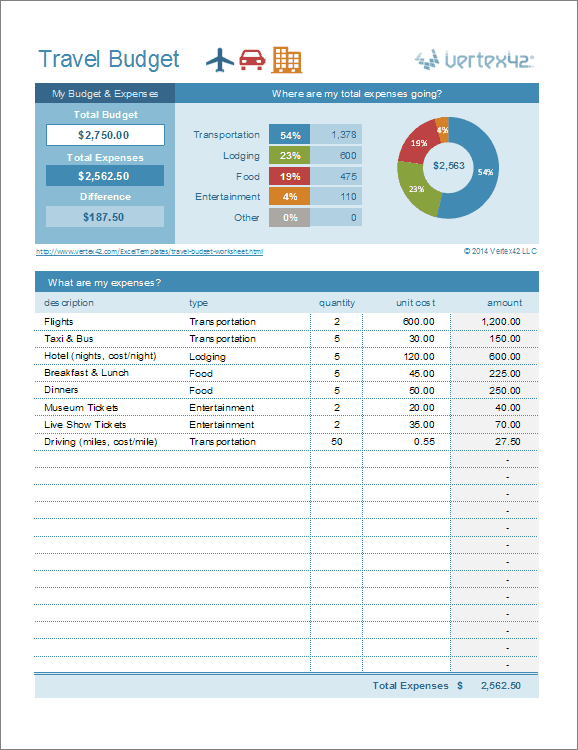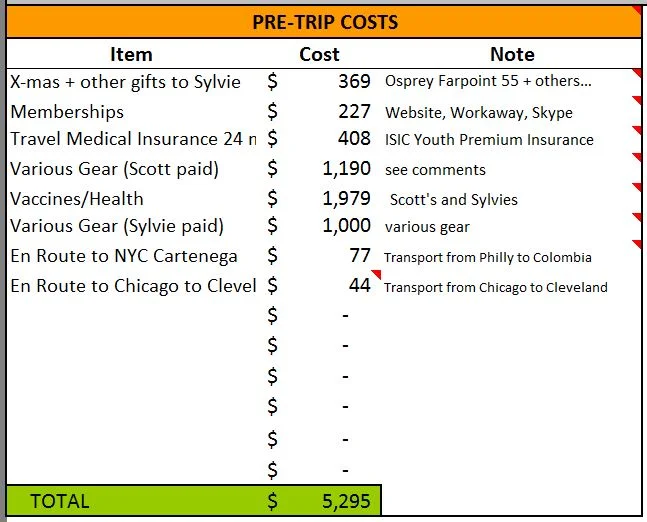Travel is one of life’s greatest pleasures, yet without careful planning, it can also become a financial burden. As an avid traveler, I’ve spent countless hours piecing together my yearly travel budget—balancing dreams with dollars. In this article, I’ll share my personal experiences and provide a detailed breakdown of a one-year travel budget that will help you navigate your finances while exploring the world.
Understanding Your Travel Budget
Before diving into the numbers, it’s essential to understand the components of a travel budget. A well-structured budget includes accommodation, transportation, meals, activities, and more. Let’s break these categories down further.
Key Components of a Travel Budget
- Accommodation
- Transportation
- Meals
- Activities and Tours
- Travel Insurance
- Souvenirs and Extras
Setting Your Travel Budget for the Year
Setting a yearly travel budget involves evaluating your income, expenses, and travel goals. Here’s a step-by-step guide to making it work:
Step 1: Calculate Your Total Income
Include all sources of income—salary, side jobs, freelance gigs, etc. This figure represents what you can potentially allocate to your travels.

Step 2: List Your Fixed Expenses
Identify your regular monthly expenses such as rent, utilities, groceries, and any debt repayments. This will help you understand how much you can save for travel.
Step 3: Set Aside a Travel Fund
Decide on an amount that you can save each month specifically for travel. Consistency is key! Even small amounts can add up over the year.

Step 4: Plan Your Travel Destinations
Think about where you want to go and how many trips you want to take. Research these destinations to better understand their costs.
Sample Yearly Travel Budget Breakdown
| Category | Monthly Estimate ($) | Yearly Estimate ($) |
|---|---|---|
| Accommodation | 500 | 6000 |
| Transportation | 300 | 3600 |
| Meals | 200 | 2400 |
| Activities | 150 | 1800 |
| Travel Insurance | 50 | 600 |
| Souvenirs & Extras | 100 | 1200 |
| Total | 1400 | 16800 |

Accommodation: Where to Stay Without Breaking the Bank
Accommodation can vary greatly depending on your destination. From hostels to luxury hotels, the options are endless. Here’s how to manage costs:
Types of Accommodation
- Hostels: Great for budget travelers looking for cheap beds and social atmospheres.
- Hotels: More privacy and amenities, but at a greater cost.
- Apartments: Often a more spacious and cost-effective choice for long stays, especially if traveling with a group.
- Camping: If you’re an outdoor enthusiast, camping can be an affordable option.

Travel Tips for Saving on Accommodation
- Book in advance to secure lower rates.
- Consider using apps like Airbnb or Booking.com for deals.
- Join loyalty programs for travel rewards.
Transportation: Getting Around on a Budget
Transportation costs can add up quickly. Here’s how to save on getting from place to place.

Transportation Options
- Public Transport: Buses and trains are often the cheapest ways to get around cities.
- Car Rentals: Useful for road trips, but remember to factor in gas prices.
- Flight Comparison Tools: Use websites like Skyscanner or Google Flights to find the best deals.
Meals: Dining on a Dime
Food can be an excellent way to experience a culture, but it doesn’t have to break the bank. Here’s how to eat well while traveling:
Saving on Meals
- Eat like a local by sampling street food or dining at local markets.
- Take advantage of lunch specials, which are often cheaper than dinner.
- Grocery shopping for snacks and quick meals can save you money.
Activities: Exploring on a Budget
Activities and tours can significantly impact your travel budget. Here are the best ways to save:
Free and Low-Cost Activities
- Explore public parks, museums with free admission days, and walking tours.
- Consider city passes that offer discounts on multiple attractions.
- Join local events or festivals which can be a great way to experience culture for little to no cost.
Travel Insurance: An Essential Expense
While it may seem like an unnecessary cost, travel insurance is crucial for protecting your finances during trips. Here’s what you need to know:
Types of Travel Insurance
- Cancellation Insurance: Reimburses you for non-refundable travel expenses.
- Medical Insurance: Covers medical emergencies while traveling abroad.
- Travel Delay Insurance: Helps alleviate costs due to delayed flights or missed connections.
Travel Extras: Souvenirs & Miscellaneous Costs
While budgeting for smaller expenses like souvenirs may seem trivial, they can add up. Here are my tips:
Practical Souvenir Buying Tips
- Set a budget for souvenirs to prevent overspending.
- Opt for local crafts or experiences that you can cherish forever.
- Use apps or websites to compare prices before making purchases.
Monthly Travel Budget Breakdown
Understanding your budget on a month-to-month basis can help you stay on track. Here’s a practical monthly breakdown based on a year of travel:
| Month | Destination | Budget ($) |
|---|---|---|
| January | Thailand | 1500 |
| February | Vietnam | 1300 |
| March | Japan | 2000 |
| April | Italy | 1800 |
| May | Spain | 1700 |
| June | Portugal | 1600 |
| July | Australia | 2500 |
| August | USA Road Trip | 3000 |
| September | Canada | 1400 |
| October | Mexico | 1300 |
| November | Greece | 1800 |
| December | France | 1900 |
| Total | – | 21,600 |
Highlights of Popular Destinations
1. Thailand
Known for its stunning beaches, rich culture, and tantalizing cuisine, Thailand is a haven for travelers. I recommend visiting Chiang Mai for its temples and lush mountains.
2. Japan
From the bustling streets of Tokyo to the serene beauty of Kyoto, Japan offers a unique blend of modernity and tradition. Don’t miss the cherry blossoms in spring!
3. Italy
With its delicious food, historic sites, and vibrant culture, Italy is a must-visit destination. Spend time in Rome and explore the canals of Venice for a memorable experience.
4. Australia
The Land Down Under offers diverse landscapes, from the Great Barrier Reef to the Outback. I loved the vibrant city life in Sydney and the natural wonders of Tasmania.
Pros and Cons of Traveling on a Budget
Pros
- Allows for more travel experiences within a limited budget.
- Encourages creativity in planning and discovering hidden gems.
- Promotes immersive experiences with local cultures without overspending.
Cons
- May lead to discomfort while sacrificing certain luxuries.
- Budget constraints can limit spontaneous travel opportunities.
- Requires meticulous planning, which can be stressful.
Frequently Asked Questions
What is the average cost of traveling for a year?
The average cost can range widely, but on average, a budget of around $15,000 to $20,000 is a good starting point for a year of travel, depending on destinations and lifestyle choices.
How can I save money while traveling?
Consider staying in hostels or budget hotels, utilizing public transport, cooking your meals, and taking advantage of free attractions and activities.
Do I need travel insurance?
Yes, travel insurance is essential for safeguarding your investment against unexpected events like trip cancellations, health emergencies, and lost luggage.
How do I find affordable flights?
Use flight comparison tools like Skyscanner or Google Flights. Set fare alerts, be flexible with dates, and check budget airlines to find the best deals.
Final Thoughts
Traveling doesn’t have to be expensive if you plan wisely. By creating a detailed travel budget, you can enjoy the adventure without the financial stress. Remember, the journey is just as important as the destination, so savor every moment. Happy travels!